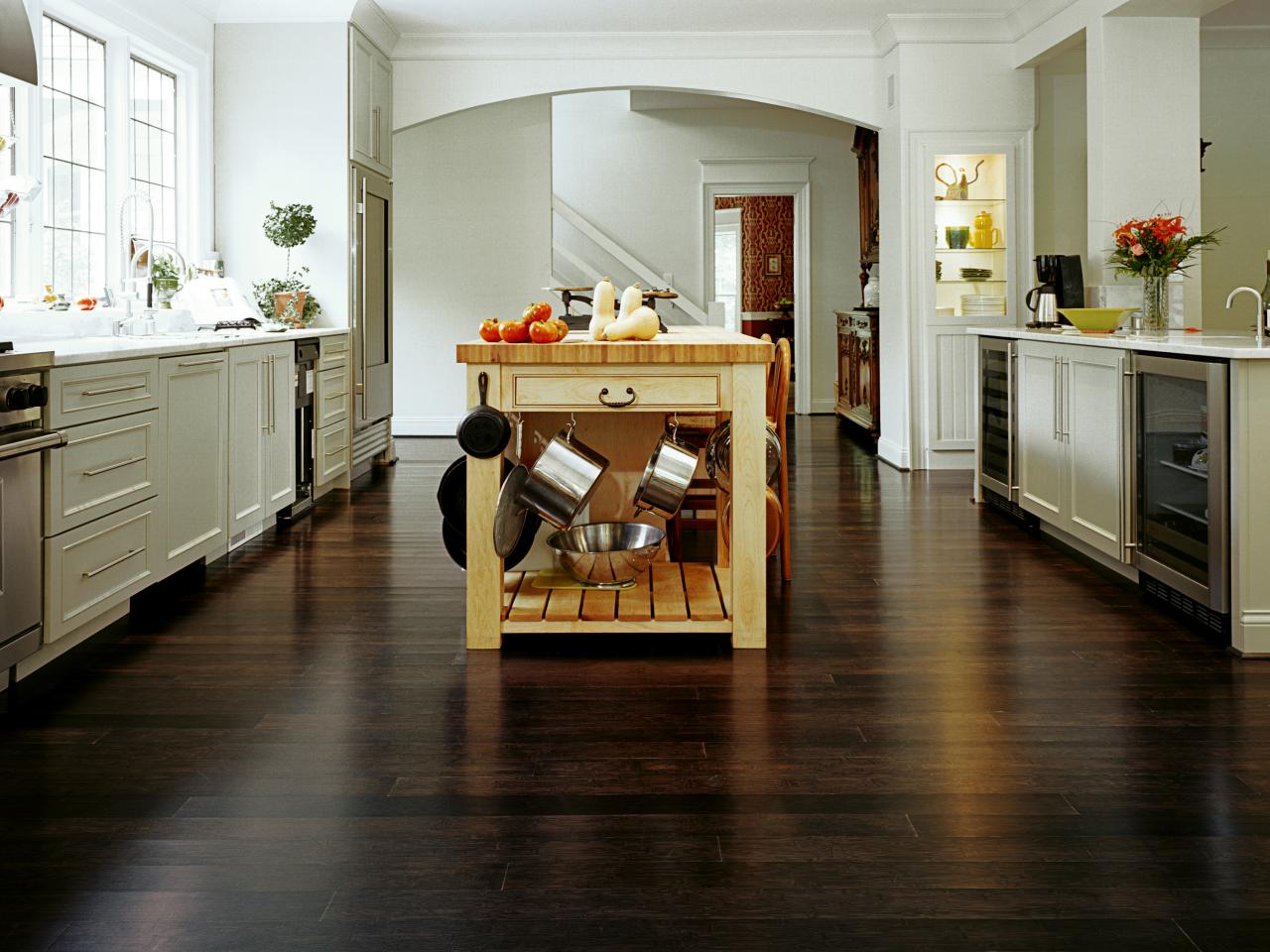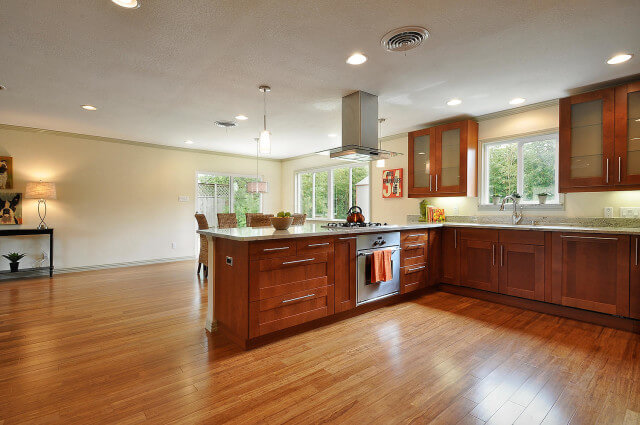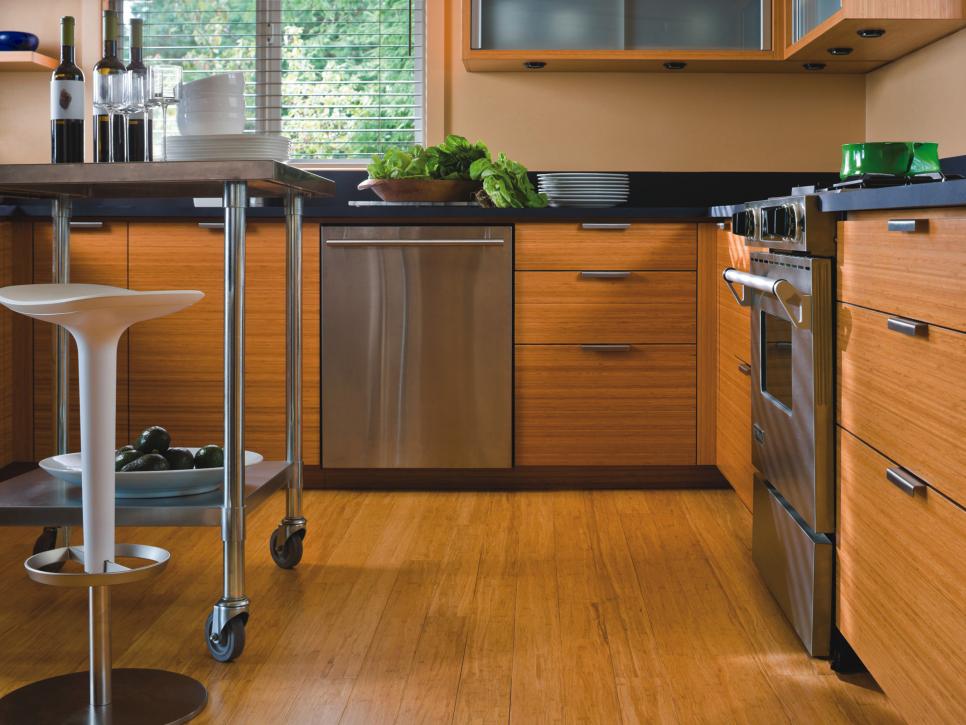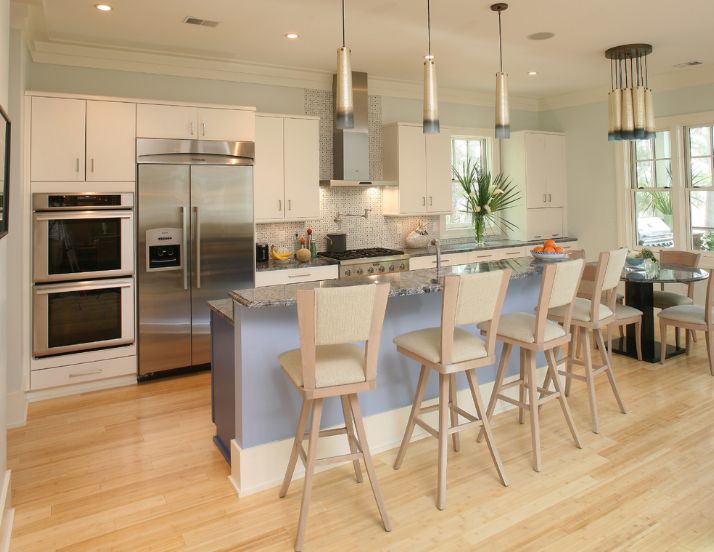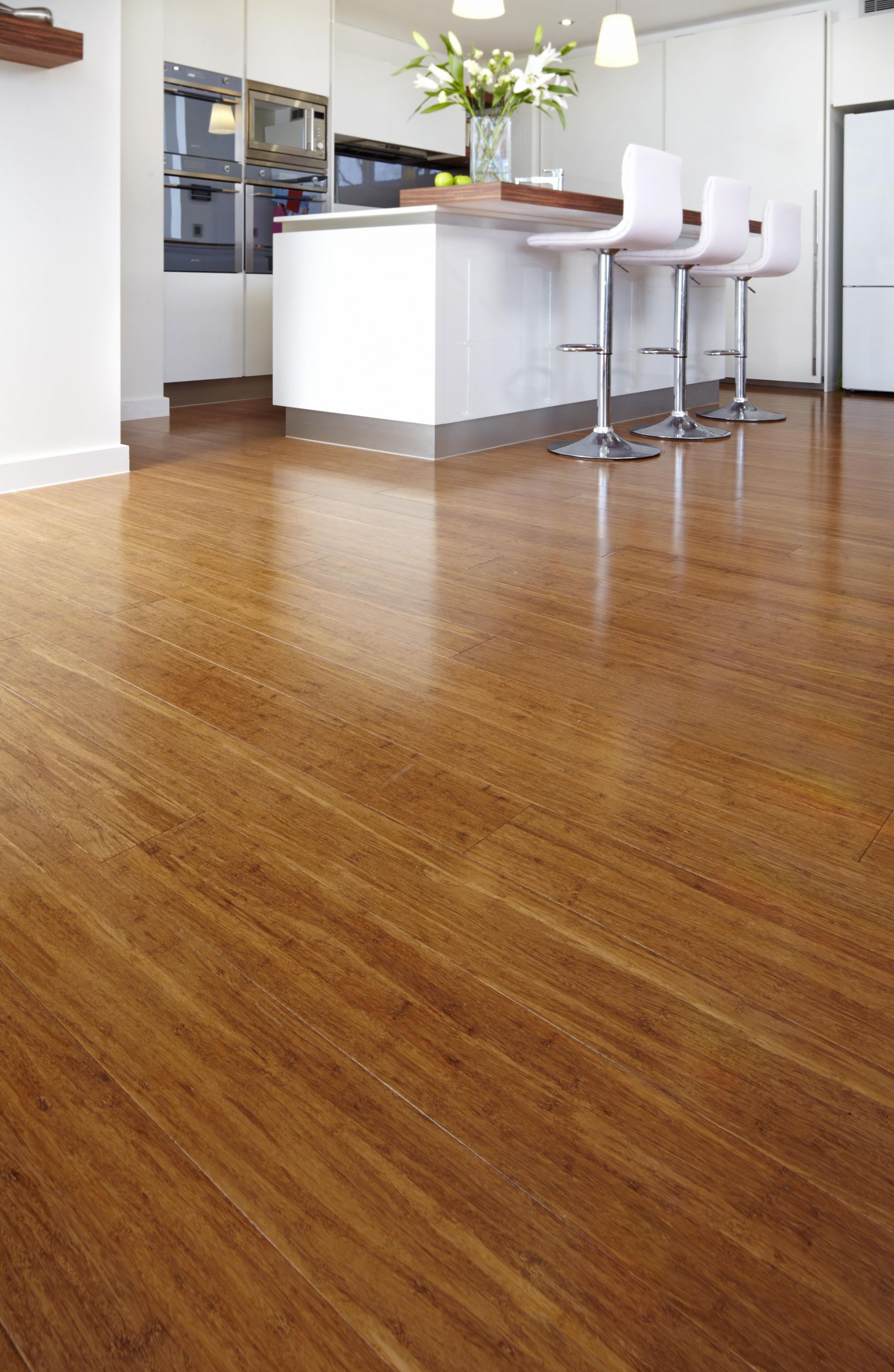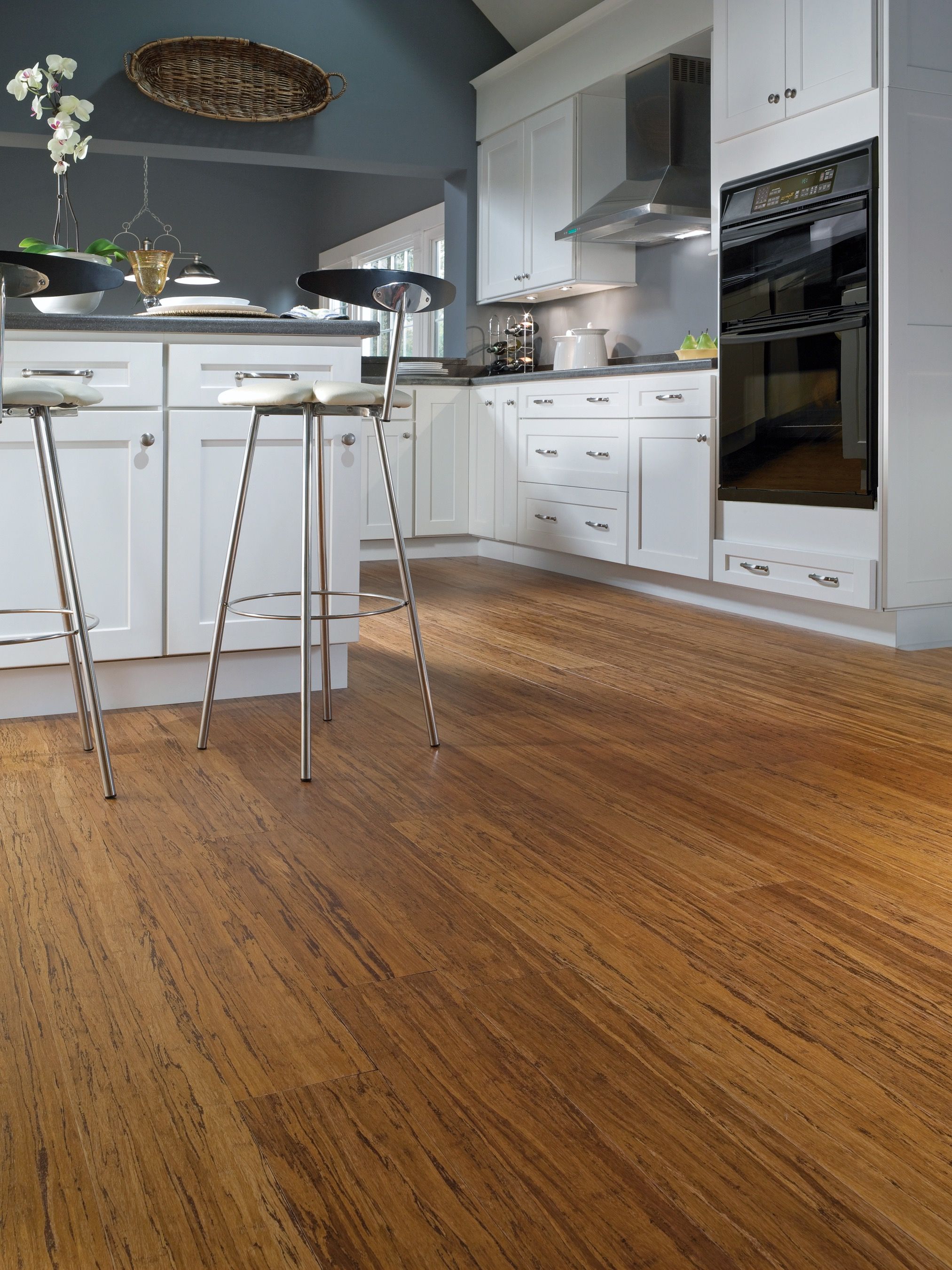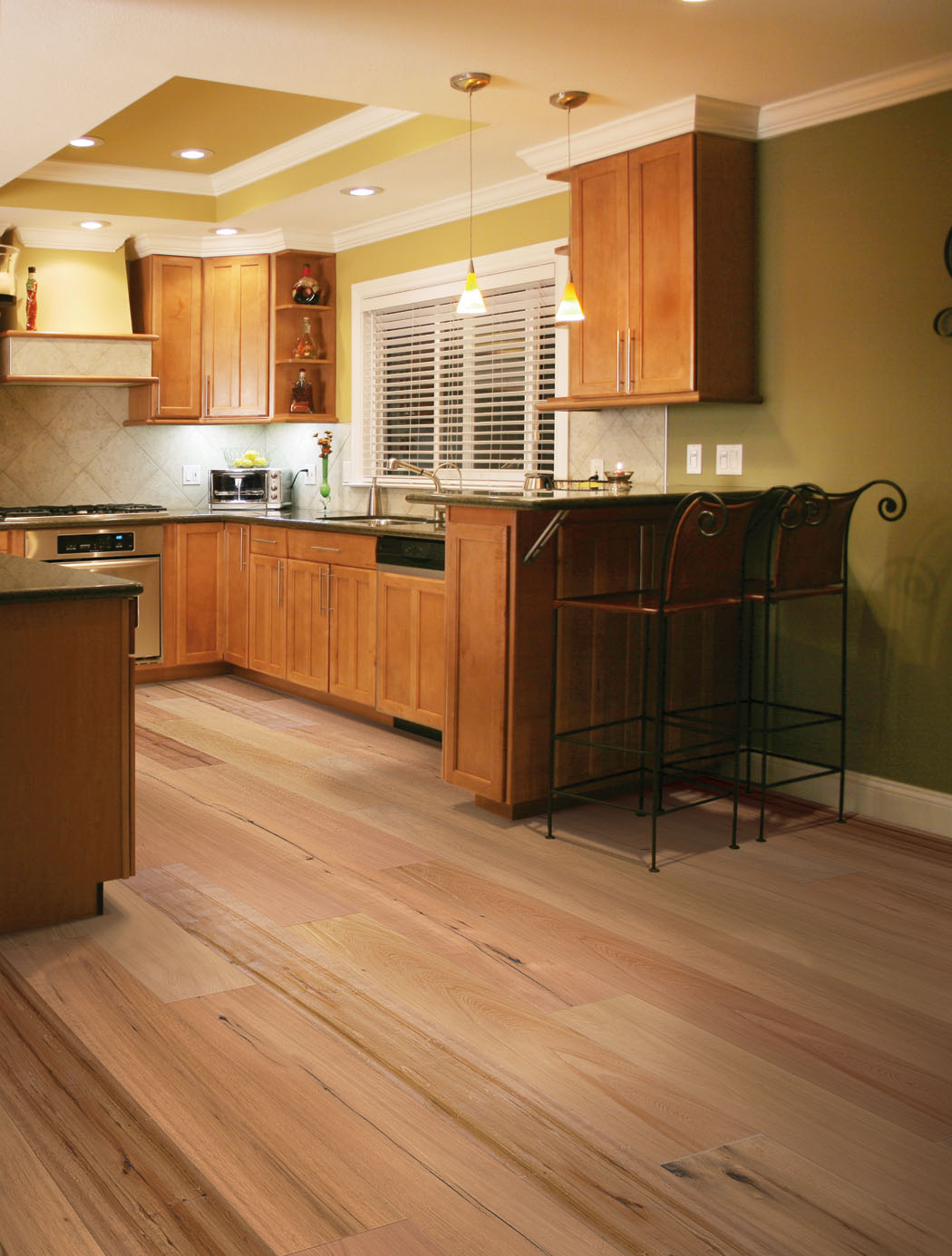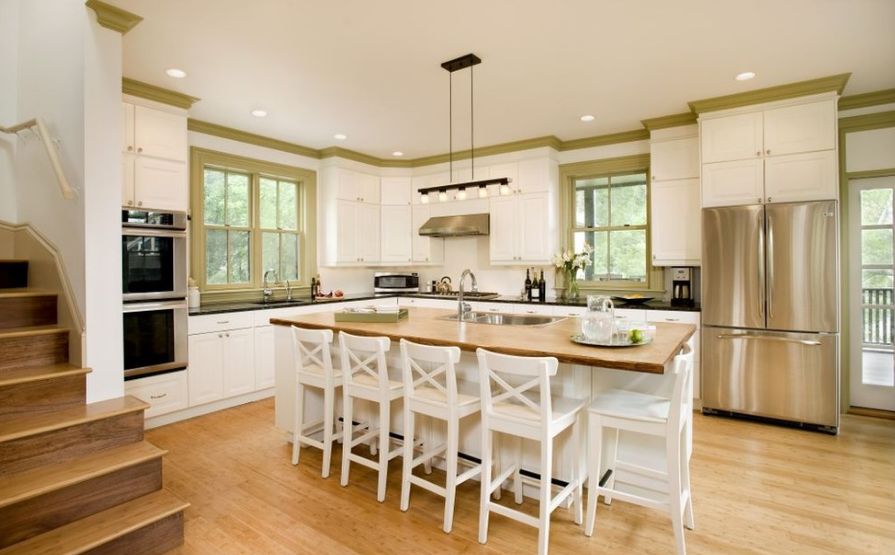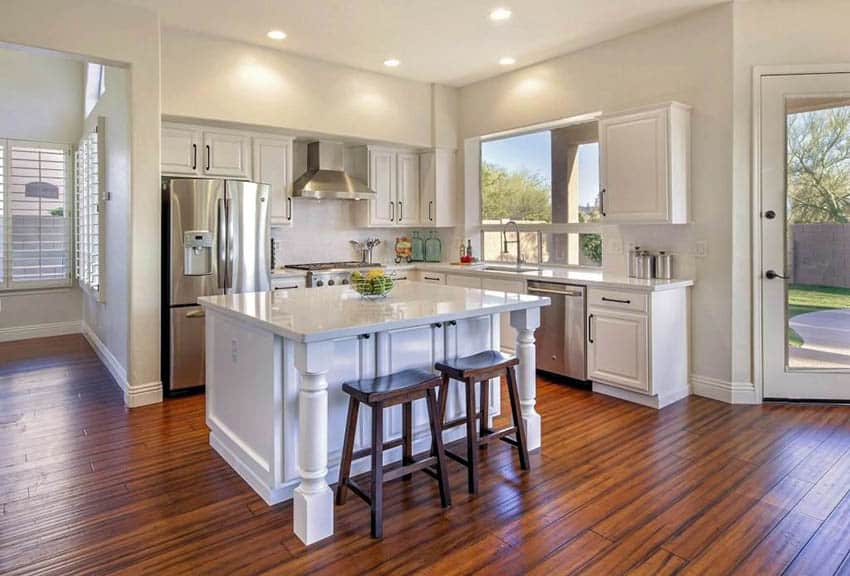The Durability of Bamboo Flooring in Kitchen Settings
Bamboo flooring is gaining popularity as a sustainable and durable option for various living spaces, including kitchens. Its natural strength and resilience make it a suitable choice for high-traffic areas, but how does it fare specifically in kitchen settings? Let’s explore the durability of bamboo flooring in kitchens.
- Natural Hardness: One of the key factors contributing to the durability of bamboo flooring in kitchens is its natural hardness. Bamboo is known for its exceptional strength, making it more resistant to dents and scratches compared to traditional hardwood floors. In a kitchen environment where heavy appliances, dropped utensils, and high foot traffic are commonplace, the inherent hardness of bamboo flooring provides a level of durability that can withstand daily wear and tear.
- Resistance to Wear: Bamboo flooring exhibits excellent resistance to wear, making it well-suited for kitchen settings where spills, foot traffic, and frequent cleaning are routine. Its ability to maintain its original appearance and structural integrity over time adds to its appeal as a durable flooring option for kitchens. With proper care and maintenance, bamboo flooring can retain its visual appeal and functional durability in the face of ongoing use.
- Dimensional Stability: Another aspect of bamboo flooring that contributes to its durability in kitchen settings is its dimensional stability. Bamboo is less susceptible to expansion and contraction due to changes in temperature and humidity compared to other wood flooring options. This stability helps prevent warping, cupping, or gaps in the flooring, ensuring that it maintains its durability and structural integrity in the dynamic environment of a kitchen.
- Impact Resistance: Bamboo flooring’s ability to withstand impact makes it a durable choice for kitchens. Whether it’s the accidental drop of a heavy pot or the movement of furniture, bamboo flooring can endure these impacts without significant damage. Its resilience to impacts enhances its durability, ensuring that it can withstand the demands of a kitchen environment without compromising its structural stability.
- Longevity: When properly installed and maintained, bamboo flooring has the potential to offer long-term durability in kitchen settings. Its natural strength and resistance to wear, combined with regular care and maintenance, contribute to its longevity as a durable flooring option. With its ability to withstand the rigors of daily kitchen activities, bamboo flooring can continue to provide a durable and visually appealing surface for years to come.
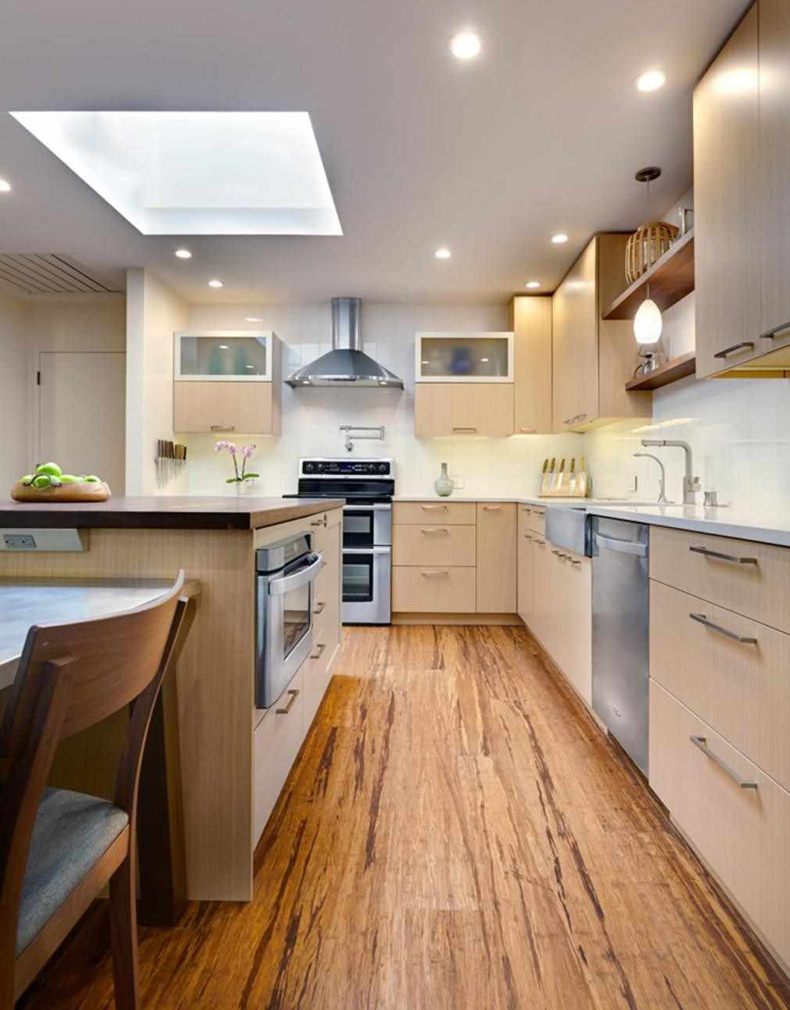
Considerations for Moisture and Spills in a Kitchen Environment
The kitchen is a space prone to moisture, spills, and frequent cleaning, making it essential to consider how bamboo flooring fares in such an environment. While bamboo flooring offers numerous benefits, addressing its compatibility with moisture and spills is crucial. Let’s explore the considerations for moisture and spills when using bamboo flooring in a kitchen environment.
Moisture Resistance: Bamboo flooring exhibits a degree of natural moisture resistance due to its dense composition. However, it’s important to note that it is not impervious to moisture. Proper installation and sealing are essential to enhance its resistance to moisture in a kitchen environment. Ensuring that the subfloor is dry and using appropriate underlayment and sealants can help mitigate the potential effects of moisture on bamboo flooring.
Spill Clean-Up: In a kitchen, spills are inevitable, and the flooring should be able to withstand occasional liquid exposure. When spills occur on bamboo flooring, prompt clean-up is crucial to prevent moisture from seeping into the material. Wiping up spills immediately and ensuring that the flooring is properly sealed can help protect bamboo flooring from the potential effects of liquid exposure, maintaining its visual appeal and structural integrity.
Proper Sealing and Finishing: Applying a high-quality sealant and finish to bamboo flooring in kitchens is essential to enhance its resistance to moisture and spills. The sealant creates a protective barrier that helps prevent water penetration, reducing the risk of damage from moisture-related issues. Employing the appropriate sealing and finishing techniques can contribute to the longevity and performance of bamboo flooring in the face of moisture and spills.
Subfloor Preparation: Proper subfloor preparation is critical for addressing moisture and spills when installing bamboo flooring in kitchens. Ensuring that the subfloor is dry, level, and free from moisture issues is essential to prevent water-related damage to the bamboo flooring. Taking the necessary steps to prepare the subfloor can help create a stable and moisture-resistant foundation for the bamboo flooring, enhancing its durability and performance in a kitchen environment.
Preventative Measures: Implementing preventative measures can help mitigate the potential effects of moisture and spills on bamboo flooring in kitchens. Using area rugs or mats in high-traffic and spill-prone areas, such as near sinks and cooking areas, can help protect the flooring from excessive liquid exposure. Additionally, addressing leaks promptly and maintaining a well-ventilated kitchen space can contribute to maintaining a healthy environment that minimizes the impact of moisture on the flooring.
Regular Maintenance: Regular maintenance practices, such as routine cleaning and inspections, play a crucial role in addressing moisture and spills in a kitchen environment. Regularly cleaning the flooring with appropriate cleaning solutions and ensuring that any spills are promptly addressed can help prevent moisture-related issues and maintain the visual appeal of bamboo flooring. Additionally, periodic inspections for signs of water damage or wear can aid in identifying and addressing potential concerns early on.
Styling and Aesthetic Appeal of Bamboo Flooring in Modern Kitchens
The aesthetic appeal of bamboo flooring in modern kitchens is a key consideration for homeowners seeking a sustainable, visually appealing, and versatile flooring option. With its natural warmth, unique grain patterns, and eco-friendly attributes, bamboo flooring offers a distinct style that complements various kitchen designs. Let’s explore the styling and aesthetic appeal of bamboo flooring in modern kitchens.
Natural Warmth and Elegance: Bamboo flooring exudes a natural warmth and elegance that adds character to modern kitchens. Its rich, honey-toned hues and distinct grain patterns create a welcoming and visually appealing ambiance in the kitchen space. The inherent warmth of bamboo flooring contributes to a cozy and inviting atmosphere, making it a desirable choice for homeowners seeking a modern yet timeless aesthetic in their kitchens.
Versatility in Design: The versatility of bamboo flooring allows it to complement a wide range of kitchen designs, from contemporary and minimalist to transitional and eclectic styles. Its clean and streamlined appearance pairs well with modern kitchen cabinetry and fixtures, while also providing a complementary backdrop for vibrant or neutral color palettes. The ability of bamboo flooring to adapt to diverse design schemes makes it an adaptable and stylish flooring option for modern kitchens.
Eco-Friendly Appeal: As sustainability continues to be a priority for many homeowners, the eco-friendly appeal of bamboo flooring resonates strongly in modern kitchens. Bamboo is a rapidly renewable resource that offers an environmentally conscious flooring choice, aligning with the principles of sustainable living. Its eco-friendly attributes contribute to the overall appeal of bamboo flooring in modern kitchens, allowing homeowners to integrate style and sustainability seamlessly.
Contemporary Texture and Visual Interest: The contemporary texture and visual interest of bamboo flooring enhance its aesthetic appeal in modern kitchens. The natural variation in grain patterns and the subtle texture of bamboo flooring add depth and visual intrigue to the kitchen space. Whether used in open-plan kitchens or as a focal point in compact culinary areas, the contemporary texture of bamboo flooring contributes to a modern and visually engaging aesthetic.
Light-Reflective Properties: Bamboo flooring’s light-reflective properties can brighten and visually expand modern kitchens, creating an airy and open feel. Its ability to reflect natural and artificial light enhances the overall brightness of the space, contributing to a fresh and welcoming ambiance. The light-reflective qualities of bamboo flooring make it an attractive choice for modern kitchens seeking to maximize natural light and create an uplifting environment.
Timeless Appeal: Beyond its contemporary attributes, bamboo flooring offers a timeless appeal that transcends design trends and complements evolving kitchen styles. Its enduring elegance and versatility ensure that it can adapt to changing design preferences while retaining its classic allure. The timeless appeal of bamboo flooring makes it a stylish and enduring choice for modern kitchens, providing a foundation for timeless design expressions.
Maintenance and Care Tips
Proper maintenance and care are essential for preserving the beauty, functionality, and longevity of bamboo flooring in kitchen spaces. As a resilient and sustainable flooring option, bamboo flooring requires specific care considerations to ensure that it continues to enhance the kitchen environment. Let’s explore maintenance and care tips for bamboo flooring in kitchen spaces.
Regular Cleaning Routine: Establishing a regular cleaning routine for bamboo flooring in kitchens is fundamental to maintaining its visual appeal and structural integrity. Use a soft-bristled broom or a vacuum cleaner with a soft attachment to remove dust, dirt, and debris from the flooring surface. Avoid using abrasive cleaning tools or harsh chemicals that can potentially damage the finish of the bamboo flooring.
Prompt Spill Clean-Up: In kitchen spaces, spills are inevitable, and prompt clean-up is essential to prevent potential damage to bamboo flooring. Wipe up spills immediately using a soft, damp cloth and a mild cleaning solution suitable for bamboo flooring. Thoroughly dry the area after cleaning to prevent moisture from seeping into the flooring. Prompt spill clean-up helps maintain the integrity of the bamboo flooring and prevents staining or warping due to prolonged exposure to liquids.
Avoid Excessive Moisture: While bamboo flooring exhibits a degree of moisture resistance, it is important to avoid excessive moisture accumulation on the surface. Use mats or rugs in areas prone to spills, such as near sinks and cooking areas, to minimize the impact of liquid exposure. Additionally, ensure that the kitchen is well-ventilated to prevent excessive humidity, which can affect the condition of the bamboo flooring.
Protective Pads and Mats: Place protective pads or mats under heavy furniture, such as kitchen tables and chairs, to prevent scratches and indentations on the bamboo flooring. The use of felt or rubber pads can help distribute the weight of furniture more evenly and protect the flooring from potential damage. Similarly, using mats in high-traffic areas can reduce wear and tear on the bamboo flooring, preserving its visual appeal.
Avoid High Heels and Sharp Objects: Encourage care when wearing high heels or shoes with sharp or abrasive soles on bamboo flooring in the kitchen. High heels and sharp objects can potentially cause scratches or indentations on the flooring surface. By promoting awareness of footwear and preventing the use of sharp objects directly on the flooring, homeowners can help maintain the pristine condition of the bamboo flooring.
Periodic Maintenance: Periodic maintenance practices, such as light buffing or reapplication of protective finishes, can help rejuvenate the appearance of bamboo flooring in kitchen spaces. Depending on the level of foot traffic and wear, periodic maintenance may include lightly sanding and refinishing high-traffic areas to restore the luster and smoothness of the flooring. Engaging in periodic maintenance contributes to the long-term care and visual appeal of bamboo flooring.
Professional Refinishing: Consider professional refinishing services for bamboo flooring in kitchen spaces when it requires extensive restoration or refinishing. Professional craftsmen can assess the condition of the flooring, address specific maintenance needs, and provide recommendations for preserving its quality and visual appeal. Professional refinishing services can help revitalize and maintain the bamboo flooring, ensuring its continued functionality and aesthetic appeal.
Environmental and Sustainability Aspects of Using Bamboo Flooring in Kitchens
The environmental and sustainability aspects of using bamboo flooring in kitchens are significant considerations for homeowners seeking eco-friendly and renewable flooring options. Bamboo, known for its rapid renewability and sustainable harvesting practices, offers a compelling choice for environmentally conscious individuals. Let’s explore the environmental and sustainability aspects of using bamboo flooring in kitchens.
Rapid Renewable Resource: Bamboo is a rapidly renewable resource that grows much faster than traditional hardwood trees, making it an environmentally sustainable flooring material. Bamboo reaches maturity in a relatively short time, typically within three to five years, compared to the several decades required for hardwood trees to mature. Its rapid renewability ensures a readily available and sustainable source of material for flooring applications, aligning with sustainable living practices.
Low Environmental Impact: The cultivation and harvesting of bamboo for flooring production have a relatively low environmental impact compared to traditional hardwoods. Bamboo forests require minimal maintenance and do not necessitate the use of harmful chemicals or extensive irrigation. Additionally, the regenerative nature of bamboo root systems helps prevent soil erosion and contributes to the overall health of the ecosystem, further underscoring its low environmental impact.
Sustainable Harvesting Practices: Responsible and sustainable harvesting practices are integral to the environmental friendliness of bamboo flooring. Bamboo can be harvested without causing damage to the plant or its surrounding environment, as it regenerates from its root system after cutting. Sustainable harvesting practices ensure that bamboo forests are managed responsibly, promoting biodiversity and long-term ecological balance while meeting the demand for bamboo flooring.
Eco-Friendly Material: Bamboo flooring is recognized as an eco-friendly material due to its sustainable attributes and minimal environmental impact. Its status as a rapidly renewable and biodegradable resource position it as a sustainable alternative to traditional hardwoods. By choosing bamboo flooring for kitchens, homeowners can contribute to environmental conservation efforts and reduce their ecological footprint through the use of an eco-friendly material.
Energy-Efficient Production: The production process for bamboo flooring often incorporates energy-efficient methods, aligning with sustainable manufacturing practices. From the harvesting and processing of bamboo to the manufacturing of flooring planks, efforts are made to optimize energy use and minimize waste. Energy-efficient production practices further enhance the environmental credentials of bamboo flooring, making it a sustainable choice for kitchen environments.
Indoor Air Quality: Bamboo flooring contributes to favorable indoor air quality, as it emits low levels of volatile organic compounds (VOCs) compared to certain synthetic flooring materials. By choosing bamboo flooring for kitchens, homeowners can promote a healthier indoor environment with reduced exposure to potentially harmful emissions, supporting the well-being of their household.
Longevity and Durability: The longevity and durability of bamboo flooring further contribute to its environmental and sustainability aspects. By selecting a long-lasting and resilient flooring material, homeowners can reduce the need for frequent replacements or renovations, thereby minimizing the environmental impact associated with the disposal of old flooring materials. The durable nature of bamboo flooring enhances its sustainability by extending its functional lifespan.
A Closer Look at Bamboo Flooring: The Pros & Cons
Bamboo Flooring for Kitchen
Kitchen Bamboo Flooring Pros and Cons
Coated Bamboo Flooring in Kitchen
A Closer Look at Bamboo Flooring
Kitchen Bamboo Flooring
Bamboo Flooring (Pros and Cons) – Designing Idea
Related Posts:
